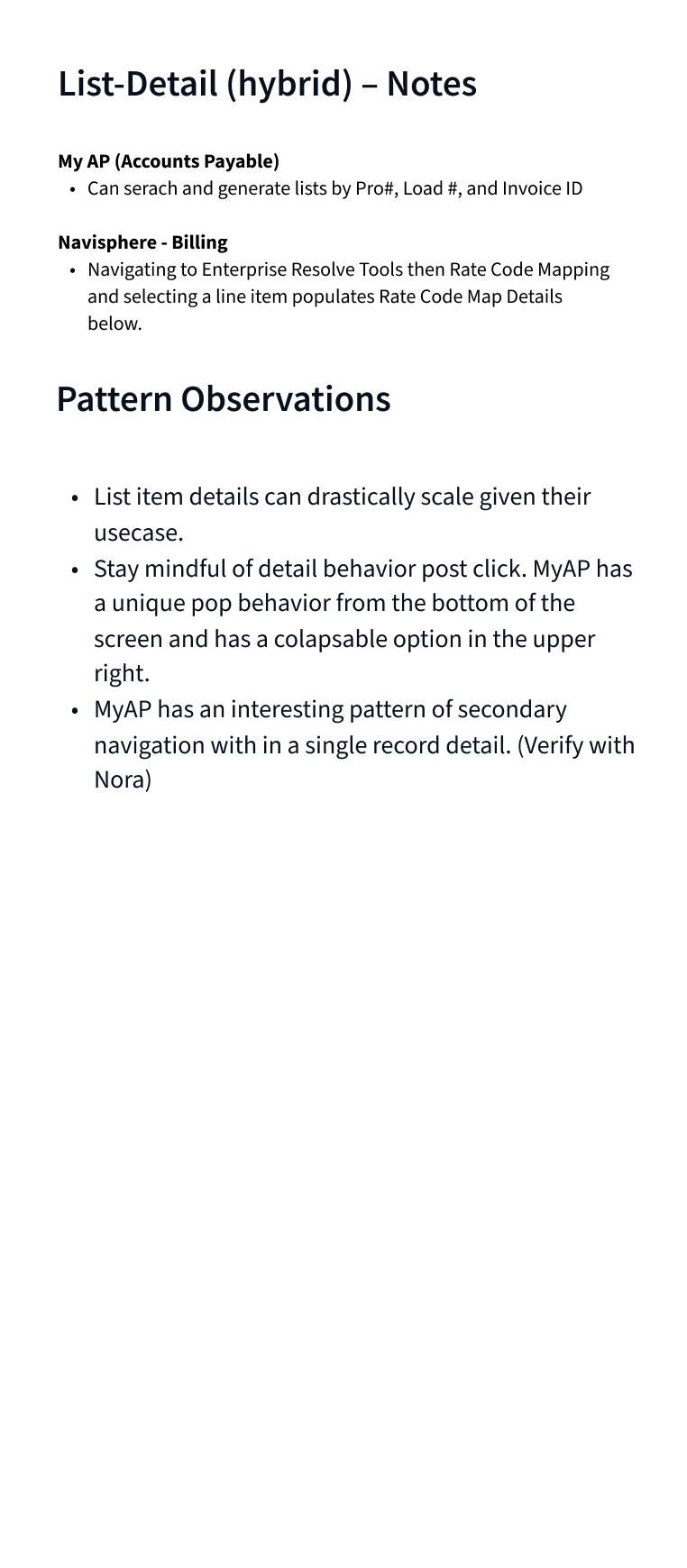A complete, visually unifying system
The problem: C.H. Robinson needed a design system to unite its many applications and technology stacks, to serve customers, carriers, and internal users. We also sought to create a system that was easy to implement, consistent, and highly usable.
The solution: As a part of the redesign of C.H. Robinson's 20+ year-old legacy technology platform, Navisphere, my co-leads and I worked to identify the needs our design system would address. We started by identifying a baseline design system with which to build and customize our company's design system into its own. Although I have built many design systems from scratch, I recommended using a baseline design system for several reasons (speed to delivery, millions of dollars in research supporting the baseline components, and ability to build upon/customize UI).
Next, we used discovery and user research methods to gather insights on existing patterns and needs within the company. We then created atomic components and page-level patterns (sometimes known as "templates"), a fully operational Figma library (complete with auto layout functionality and design tokens), and documentation. Lastly, we laid the ground work for a governance, enterprise-wide contribution, and maintenance process for the design system's future success.





Our Users, Scope, Constraints, and Timeline
To learn more about the users of Navisphere, and thus the C.H. Robinson design system, as well as insights on scope, constraints, and timeline for this project, please the Navisphere project in the UX & Product design collection on my website.







My Role
I leveraged my previous experience creating design systems and working with Material Design to guide the team in decision making and execution. My role also included research, strategy, user interviews, workshops, user testing, interactive prototyping, color theory, psychology, typography, Figma programming, and writing. I collaborated with cross-functional partners in enterprise architecture, our Tools & Patterns team comprised of full stack engineers, our project manager, and several folks in leadership positions (manager, director, VP).



